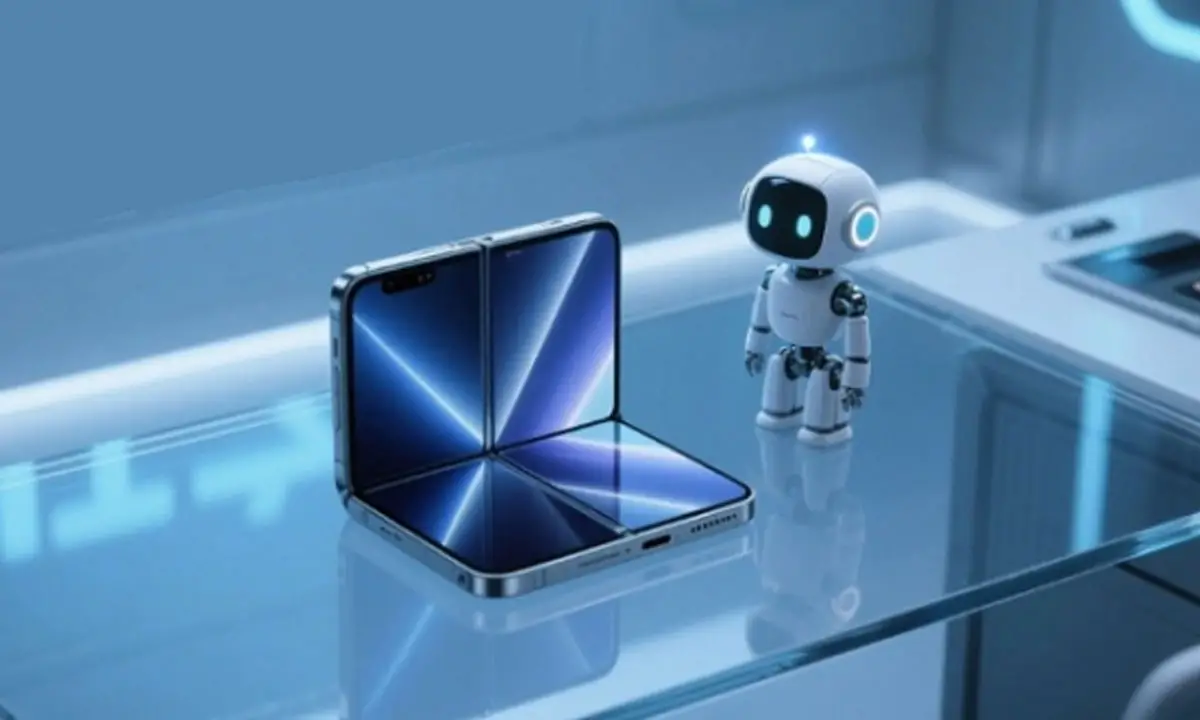Apple’s 2027 Product Renaissance: Foldables, Glass iPhones, AI Everywhere, and the Future of Innovation
After years of incremental hardware refreshes and predictable product upgrades, Apple appears ready to flip the script. According to Bloomberg’s Mark Gurman, the tech titan is preparing to launch what he calls a “product renaissance” starting in late 2026 and peaking in 2027. This dramatic overhaul signals Apple’s most ambitious product roadmap in over a decade and could usher in a new golden era for the company known for defining categories with groundbreaking innovation.
As Apple fans grow weary of evolutionary updates, Apple seems to have heard the call for change. From foldable smartphones and advanced AI integration to next-gen wearables and even robotics, Cupertino’s 2027 vision looks more audacious than ever before.
The Foldable iPhone Arrives: Apple Enters a New Era of Mobile Design
At the heart of this renaissance is the long-anticipated foldable iPhone. Though rivals like Samsung, Huawei, and Google have made significant inroads into the foldables space, Apple has taken its time—presumably to perfect the formula rather than rush a half-baked product to market.
Slated for release alongside the iPhone 18 lineup in the latter half of 2026, Apple’s first foldable iPhone is expected to be a premium device that redefines the foldables category. Unlike many existing models plagued by screen creases and durability concerns, Apple’s foldable will reportedly boast a creaseless display. This alone could be a game-changer, making the foldable feel less like a gimmick and more like the future of mobile.
The device will likely incorporate a titanium frame to enhance durability without compromising aesthetics. As with most Apple products, this engineering precision will come at a price—industry insiders expect the foldable iPhone to be the most expensive iPhone yet, targeting a high-end user base.
The release will not only mark Apple’s formal entry into foldables but also set the tone for its next phase of design philosophy, blending elegance, functionality, and emerging user experiences.
iPhone Turns 20: A Radically Curved, All-Glass Marvel in the Works
In 2027, the iPhone turns 20, and Apple reportedly plans to celebrate with a radical redesign unlike anything seen before. Gurman has hinted at a mostly glass iPhone with curved edges and, most notably, no visible display cutouts—not even the Dynamic Island or Face ID sensor cutouts. This minimalist design will represent the most significant shift in the iPhone’s physical appearance since its original 2007 launch.
While specific specs remain under wraps, this 20th-anniversary edition is expected to serve as a symbolic and technical milestone. It’s a return to bold, disruptive design that harks back to Steve Jobs’ original vision—an iPhone that feels like a seamless piece of glass and metal, intuitive in its operation and futuristic in its presence.
Industry speculation suggests that Apple may achieve this sleekness through under-display Face ID sensors, in-screen front cameras, and potentially haptic feedback enhancements that make the device feel more tactile despite its smooth, unbroken exterior.
Smart Glasses: Apple’s Answer to the AR Future
Another major pillar of Apple’s 2027 strategy is its long-rumored AR glasses, designed to directly compete with Meta’s Ray-Ban smart glasses. These glasses will go far beyond simple display overlays. Powered by Apple’s proprietary silicon chips, they’re expected to feature an immersive mixed-reality experience that brings AI and visual intelligence into everyday life.
The glasses are rumored to include integrated cameras, microphones, and speakers, allowing for a fully interactive experience. Apple’s Visual Intelligence engine—an in-house AI framework focused on environmental awareness—will enable the glasses to understand and respond to their surroundings in real-time. Whether reading contextual information from signs, translating foreign text, or identifying nearby objects, the device is set to revolutionize how we interact with the world around us.
These smart glasses could serve as a lightweight alternative to Apple Vision Pro, bringing some of the power of spatial computing to a much smaller form factor. Unlike the bulkier headsets, this wearable could be a breakthrough in mainstream AR adoption, assuming Apple can overcome the industry’s ongoing struggles with battery life, display brightness, and comfort.
AI-Enhanced Wearables: The Watch and AirPods Get Smarter—And Visual
Apple is also looking to extend its AI push into existing product lines. The Apple Watch and AirPods are set to become smarter, more capable devices with integrated cameras and improved environmental awareness.
Leaked prototypes suggest that future Apple Watches will feature tiny cameras embedded in the bezels, enabling basic visual recognition tasks like barcode scanning or FaceTime video snapshots. Combined with on-device AI, these capabilities could introduce health tracking features that analyze user behavior or surroundings to provide more accurate wellness data.
Meanwhile, AirPods may gain camera modules and smarter sensors capable of spatial recognition. Imagine walking into a room and your AirPods intelligently adjusting audio based on surroundings or helping you find misplaced items using visual and audio cues. Apple appears to be positioning its wearables not just as accessories, but as intelligent companions that understand and augment your reality.
Siri 2.0: A Conversational Leap Forward Powered by LLMs
Another highlight of this renaissance is Apple’s long-overdue overhaul of Siri. By 2027, Siri will be rebuilt from the ground up, with Apple leveraging large language models (LLMs) to offer a more natural, conversational AI assistant.
The revamped Siri, expected to debut with iOS 20, will go far beyond the limited, command-based interaction users are familiar with today. Instead, it will allow for flowing conversations, contextual understanding, and proactive task management. Apple is reportedly developing dedicated server chips optimized for AI processing, allowing for faster, more secure on-device interactions.
This new Siri aims to be a central node in Apple’s ecosystem, tying together smart glasses, wearables, iPhones, and even home devices. Whether you’re asking for help with complex calendar scheduling, requesting real-time translations, or automating your smart home, Siri 2.0 will be deeply integrated into every facet of Apple’s user experience.
Entering the Robotics Arena: Apple’s Smart Tabletop Robot
In a move that few saw coming, Apple is preparing to dip its toes into robotics. Its first entry into this field is expected to be a “tabletop robot with a robotic arm,” complete with AI integration and its own distinct personality. This robotic device will function as a smart assistant, blending utility with charm—think of it as a futuristic blend of Alexa, a desk organizer, and a Pixar character.
Designed to sit on kitchen counters or office desks, this robot will reportedly feature a movable arm capable of pointing, gesturing, and perhaps even performing basic tasks like picking up objects, scanning documents, or interacting with other Apple devices. Its facial recognition capabilities and personalized AI interactions could create a sense of companionship—especially in home settings.
This robotic assistant will also serve as a testing ground for Apple’s broader robotics ambitions, potentially leading to more advanced home or industrial products down the line. Given Apple’s history of taking niche technologies and refining them for mass appeal, this tabletop robot could be a sleeper hit.
The Hybrid iPad-Mac: Apple’s Vision for the Next Computing Platform
Looking slightly beyond 2027, Apple is reportedly developing a hybrid device that merges the iPad’s portability with the Mac’s desktop prowess. This foldable touchscreen device will essentially act as a convertible—part tablet, part laptop, and part foldable display hub.
Set to potentially launch in 2028, the hybrid will likely run a version of macOS or a new software platform altogether, blurring the line between work and play. Think of it as Apple’s response to the growing demand for flexible computing that can adapt to different usage contexts—editing video on a flat surface, taking notes in tablet mode, or running desktop apps on the go.
The device could use Apple’s next-generation M-series chips and support advanced multitasking, external displays, and full Apple Pencil integration. Its delay until 2028 suggests Apple wants to get the experience right before entering this converged space.
Apple’s AI Core Strategy: Intelligence Embedded in Every Product
Across every new and refreshed product in Apple’s lineup, one thing remains consistent: the company’s strategic commitment to artificial intelligence. Unlike its rivals who often rely heavily on cloud-based AI, Apple is investing in a hybrid model—balancing edge processing on-device with powerful server-side computing.
The goal is to make intelligence invisible but ever-present. Whether it’s smart glasses guiding you through city streets, a foldable iPhone predicting your next action, or Siri handling tasks with contextual precision, Apple wants AI to feel personal, private, and indispensable.
Apple Intelligence, the umbrella under which all these initiatives fall, will likely be the branding used to define this AI wave. This branding could extend across devices, much like Retina displays or M-series chips did in previous generations.
Navigating Challenges and Market Realities
Of course, with all ambitious roadmaps comes a degree of uncertainty. Gurman notes that Apple’s internal timelines are “fluid,” with product releases often delayed, modified, or canceled altogether. Previous examples—like the AirPower mat and canceled car project—show Apple is willing to shelve ideas that don’t meet its rigorous standards.
Furthermore, the company faces growing scrutiny over data privacy, environmental sustainability, and competition laws—each of which could shape how these products are developed or marketed globally.
Still, this 2027 vision suggests that Apple recognizes a critical need: to lead again rather than iterate. With competitors in Asia pushing boundaries in foldables and AI, and companies like Meta and Google experimenting with wearable tech and voice AI, Apple’s long-standing approach of waiting, perfecting, and then dominating could once again pay off.
Conclusion: A Return to Form, or a Risky Bet?
Apple’s rumored 2027 product renaissance feels like a declaration of intent. It’s a roadmap that reminds users and the tech industry alike that Apple isn’t content with incrementalism. The bold push into foldables, smart glasses, AI-driven wearables, conversational Siri, and even robotics suggests Apple is eager to reassert itself as a trailblazer, not just a luxury brand with polished designs.
Whether all these innovations come to fruition remains to be seen, but one thing is certain: Apple is once again dreaming big. For longtime fans and curious observers alike, 2027 could be the year Apple reclaims its reputation as the company that shapes the future.
Which of Apple’s upcoming innovations are you most excited about? The revolutionary foldable iPhone? The all-glass 20th-anniversary iPhone? Or Apple’s AI-powered tabletop robot?

